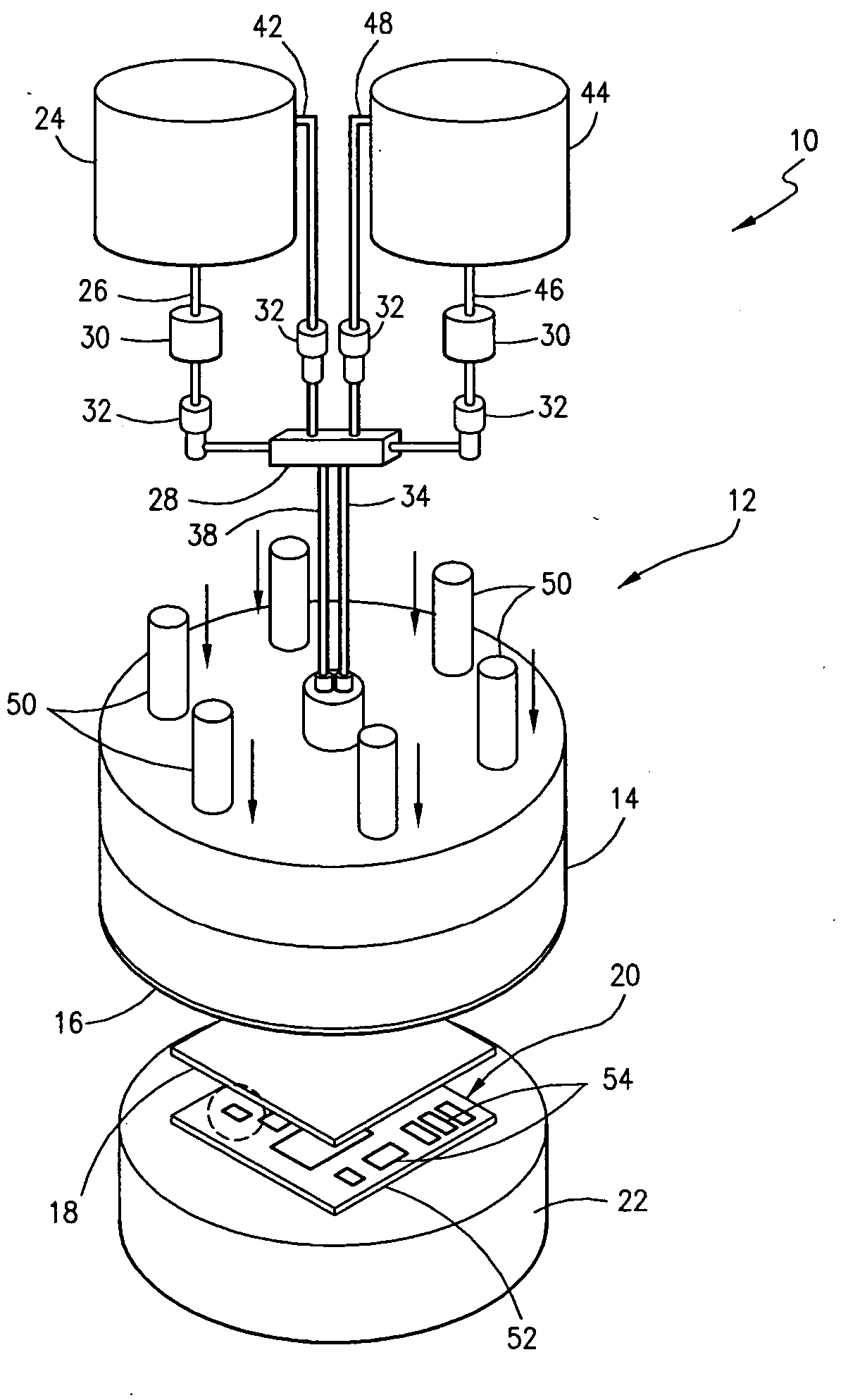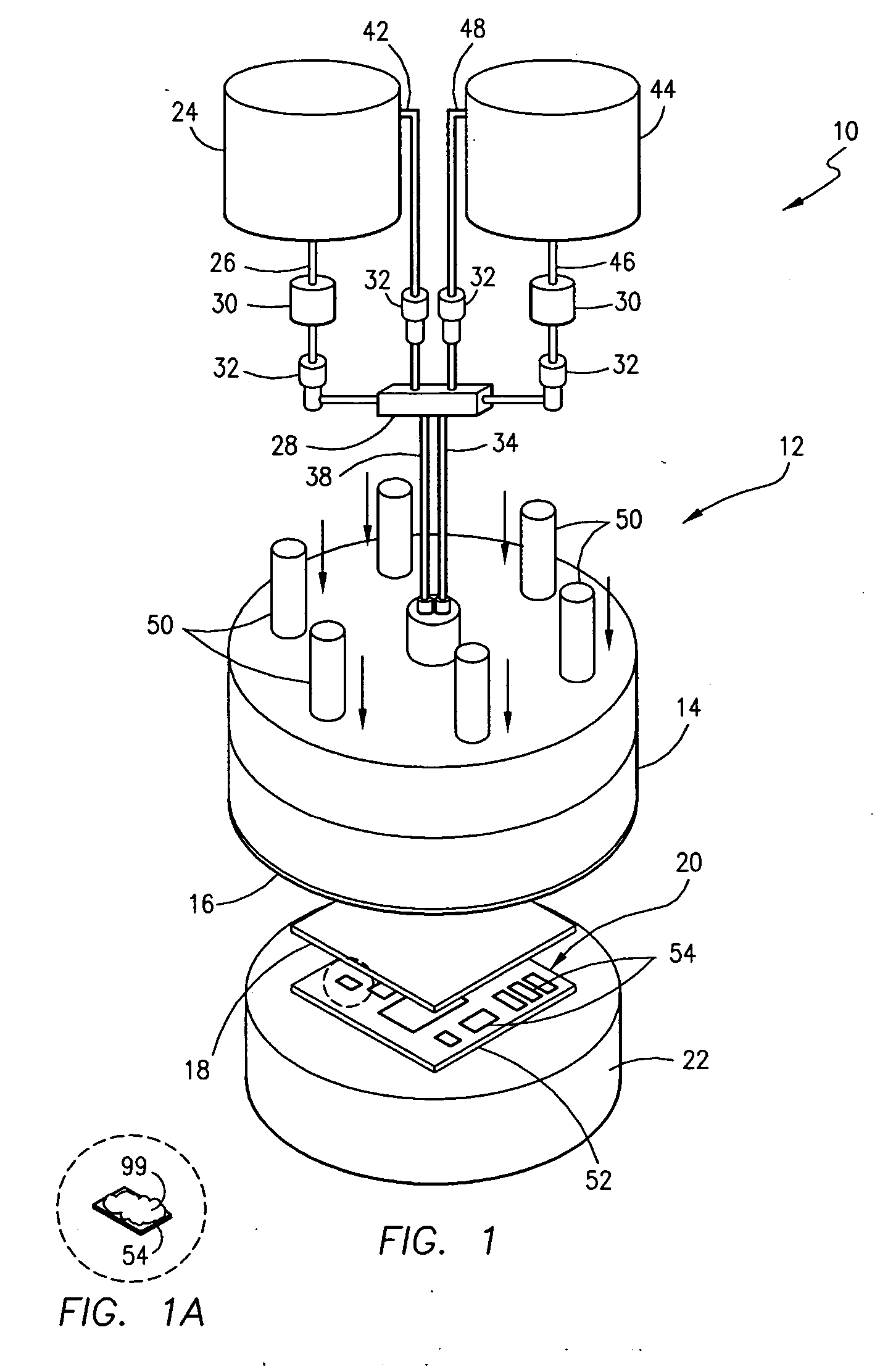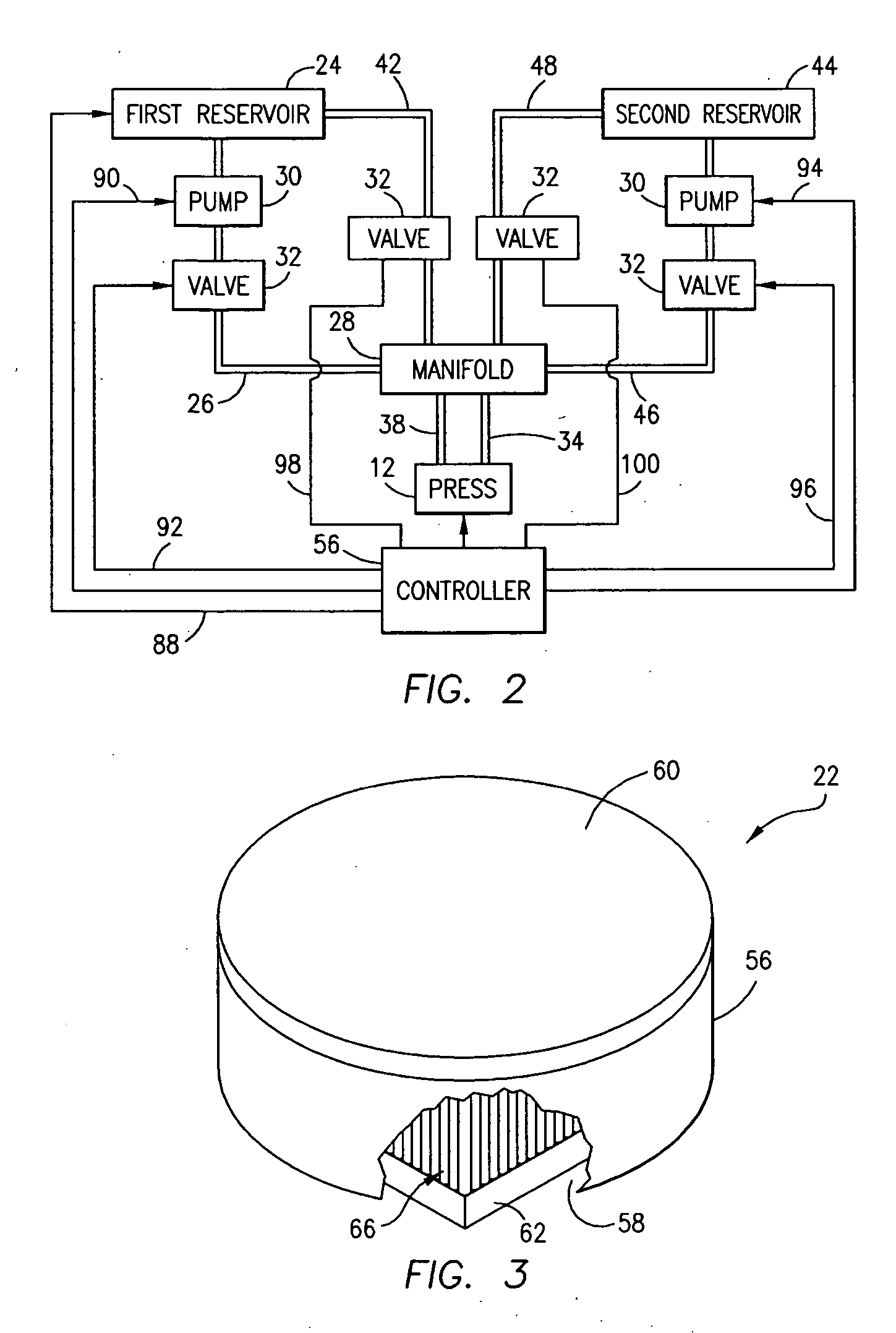Method and apparatus for sealing flex circuits having heat sensitive circuit elements
a circuit element and heat-sensitive technology, applied in the field of flexible circuits, can solve the problems of limiting the speed or frequency at which the electric components mounted thereto can operate, exposing all of the circuit elements to moisture, chemicals or other contaminants, and flex circuits are thin, light weight, flexible and high-routability. to achieve the effect of adding thermal protection
- Summary
- Abstract
- Description
- Claims
- Application Information
AI Technical Summary
Benefits of technology
Problems solved by technology
Method used
Image
Examples
Embodiment Construction
[0019] Referring now to the Figs., the apparatus 10 of this invention is schematically illustrated. The apparatus 10 includes an iso-static press 12 having a housing 14 formed with a hollow interior. The base of the housing 14 mounts a flexible membrane 16 having an exposed surface coated with Teflon® or other release agent which will not stick to LCP, and an inside surface coated with a hydrophobic film. Preferably, the flexible membrane 16 is formed of high density polyethylene, butyl rubber, ethylene propylene diene monomer rubber or a similar material.
[0020] The press 12 is operative to apply heat and pressure against a cover layer 18 which overlies a flex circuit 20 placed upon a support 22. In the presently preferred embodiment, the press 12 is heated by the introduction into its hollow interior of heated oil or a similar fluid whose temperature can be relatively accurately controlled and maintained within the range of about 283° C. to 320° C. A first reservoir 24 having heat...
PUM
| Property | Measurement | Unit |
|---|---|---|
| temperature | aaaaa | aaaaa |
| melt temperature | aaaaa | aaaaa |
| temperature | aaaaa | aaaaa |
Abstract
Description
Claims
Application Information
 Login to View More
Login to View More - R&D
- Intellectual Property
- Life Sciences
- Materials
- Tech Scout
- Unparalleled Data Quality
- Higher Quality Content
- 60% Fewer Hallucinations
Browse by: Latest US Patents, China's latest patents, Technical Efficacy Thesaurus, Application Domain, Technology Topic, Popular Technical Reports.
© 2025 PatSnap. All rights reserved.Legal|Privacy policy|Modern Slavery Act Transparency Statement|Sitemap|About US| Contact US: help@patsnap.com



